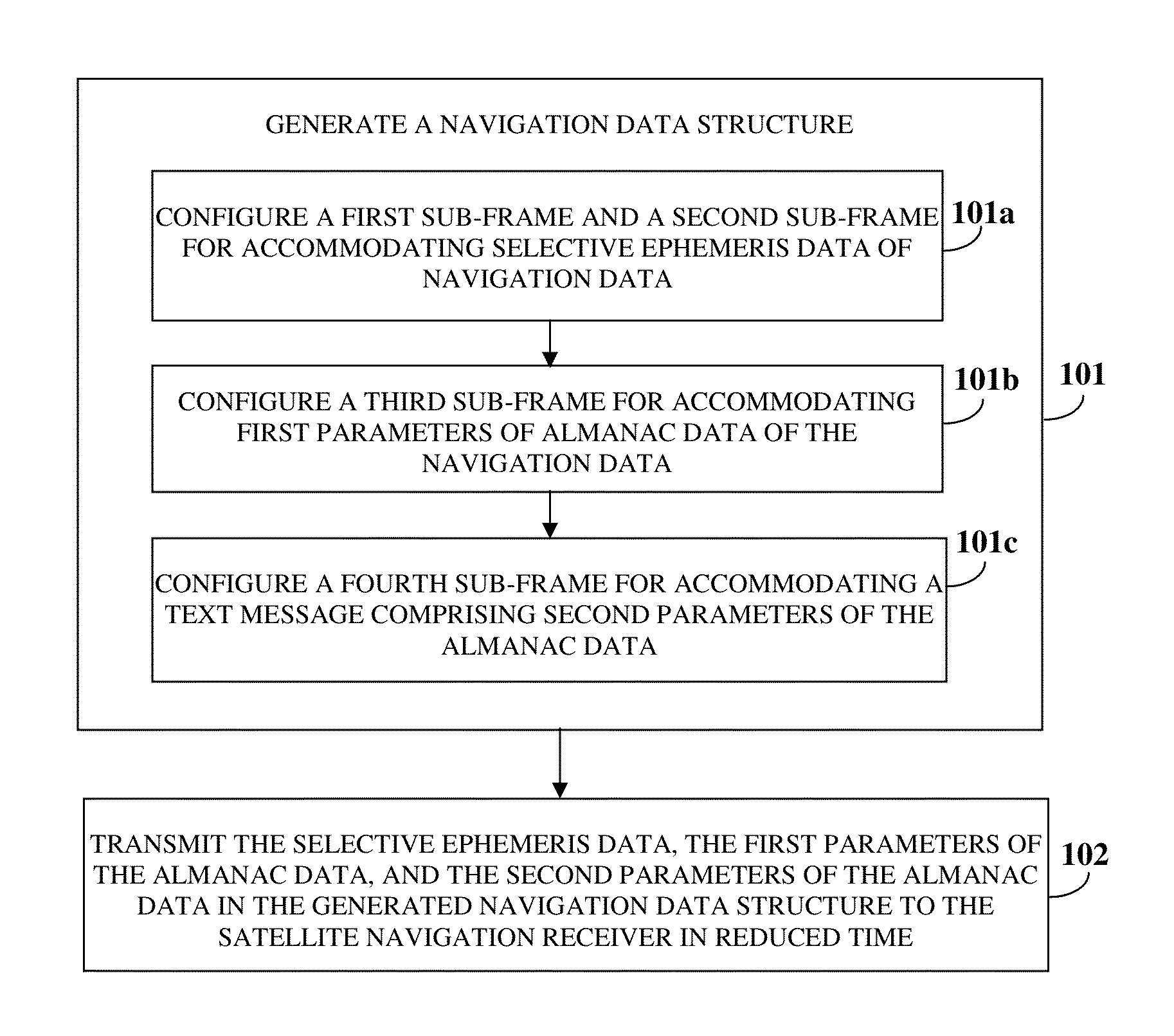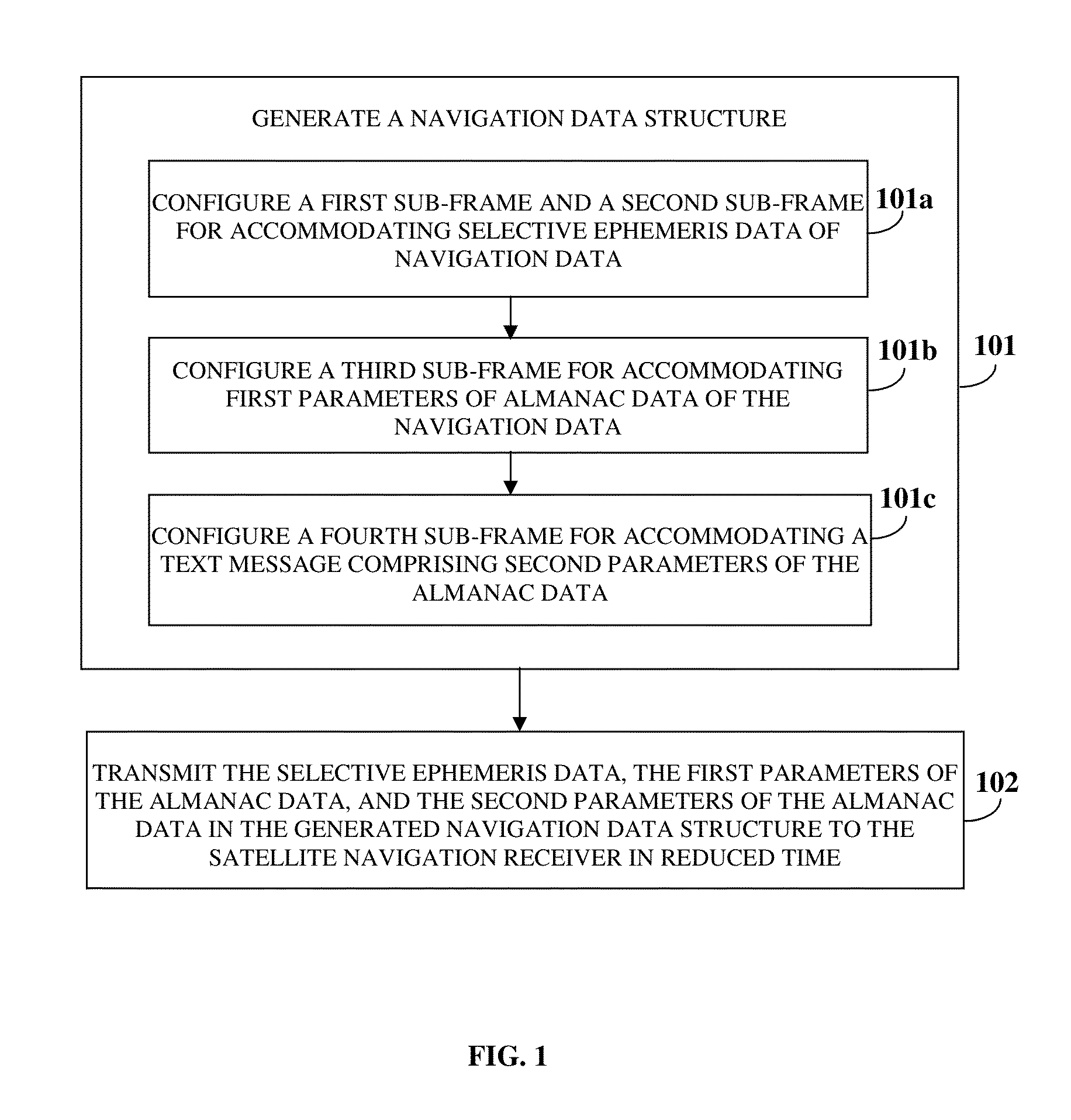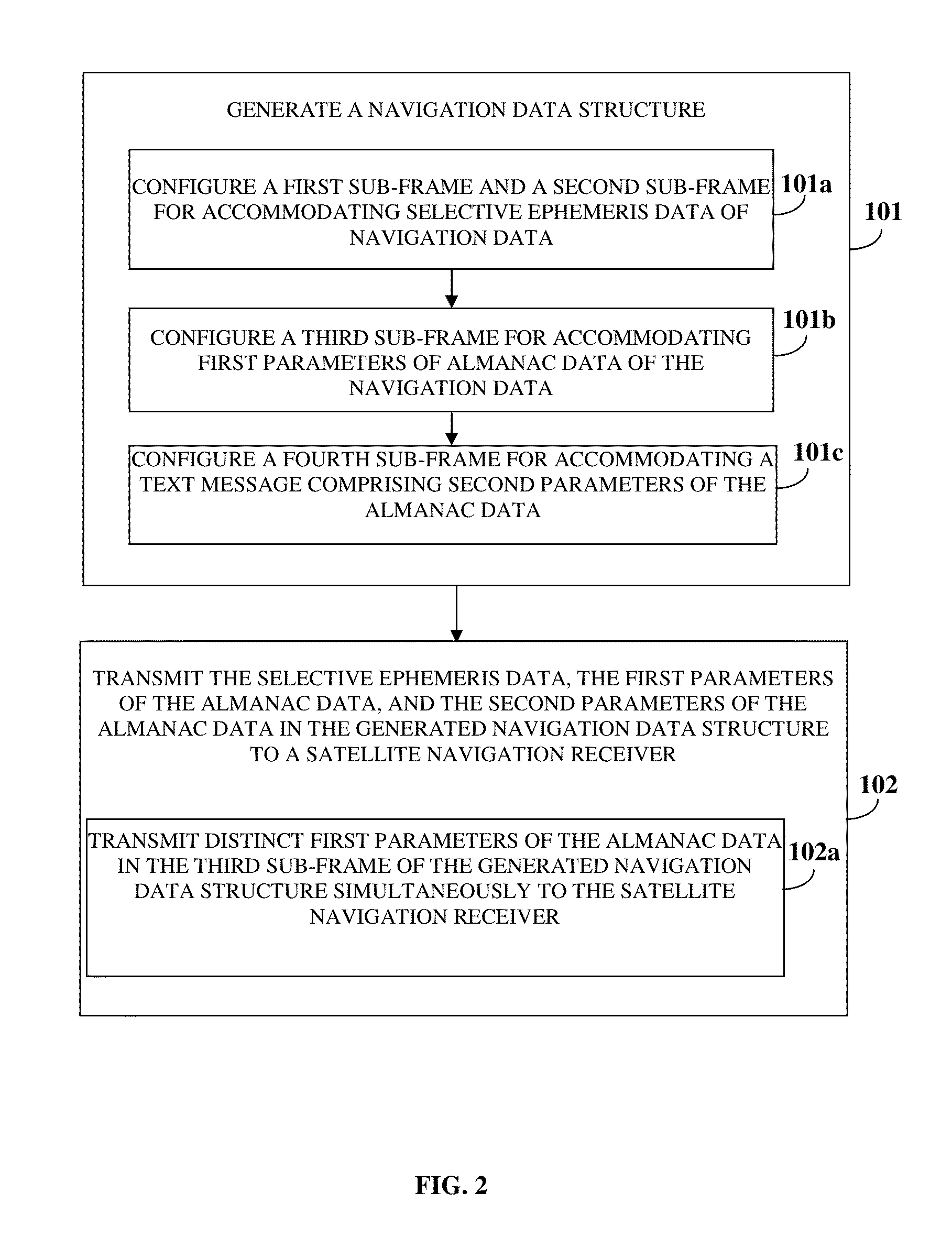Navigation Data Structure Generation And Data Transmission For Optimal Time To First Fix
a technology of data structure and navigation data, applied in the field of navigation data structure generation and data transmission for optimal time to first fix, can solve the problems of ineffective processing of navigation signals for reducing line of sight (lost) ttff, delay in collecting navigation data translation, and high deployment costs
- Summary
- Abstract
- Description
- Claims
- Application Information
AI Technical Summary
Benefits of technology
Problems solved by technology
Method used
Image
Examples
Embodiment Construction
[0048]FIG. 1 illustrates a method for transmitting navigation data to a satellite navigation receiver for reducing time to first fix (TTFF) in the satellite navigation receiver. The method disclosed herein enables transmission of the navigation data to a single frequency satellite navigation receiver for reducing time to first fix in the single frequency satellite navigation receiver. The method disclosed herein provides a signal generation system for generating 101a navigation data structure as exemplarily illustrated in FIG. 6. The navigation data structure comprises a first sub-frame, a second sub-frame, a third sub-frame, and a fourth sub-frame. The signal generation system configures 101a the first sub-frame and the second sub-frame for accommodating selective ephemeris data of the navigation data. As used herein, the term “selective ephemeris data” refers to essential ephemeris parameters that define orbital information of a satellite. The selective ephemeris data comprises, f...
PUM
 Login to View More
Login to View More Abstract
Description
Claims
Application Information
 Login to View More
Login to View More - R&D
- Intellectual Property
- Life Sciences
- Materials
- Tech Scout
- Unparalleled Data Quality
- Higher Quality Content
- 60% Fewer Hallucinations
Browse by: Latest US Patents, China's latest patents, Technical Efficacy Thesaurus, Application Domain, Technology Topic, Popular Technical Reports.
© 2025 PatSnap. All rights reserved.Legal|Privacy policy|Modern Slavery Act Transparency Statement|Sitemap|About US| Contact US: help@patsnap.com



